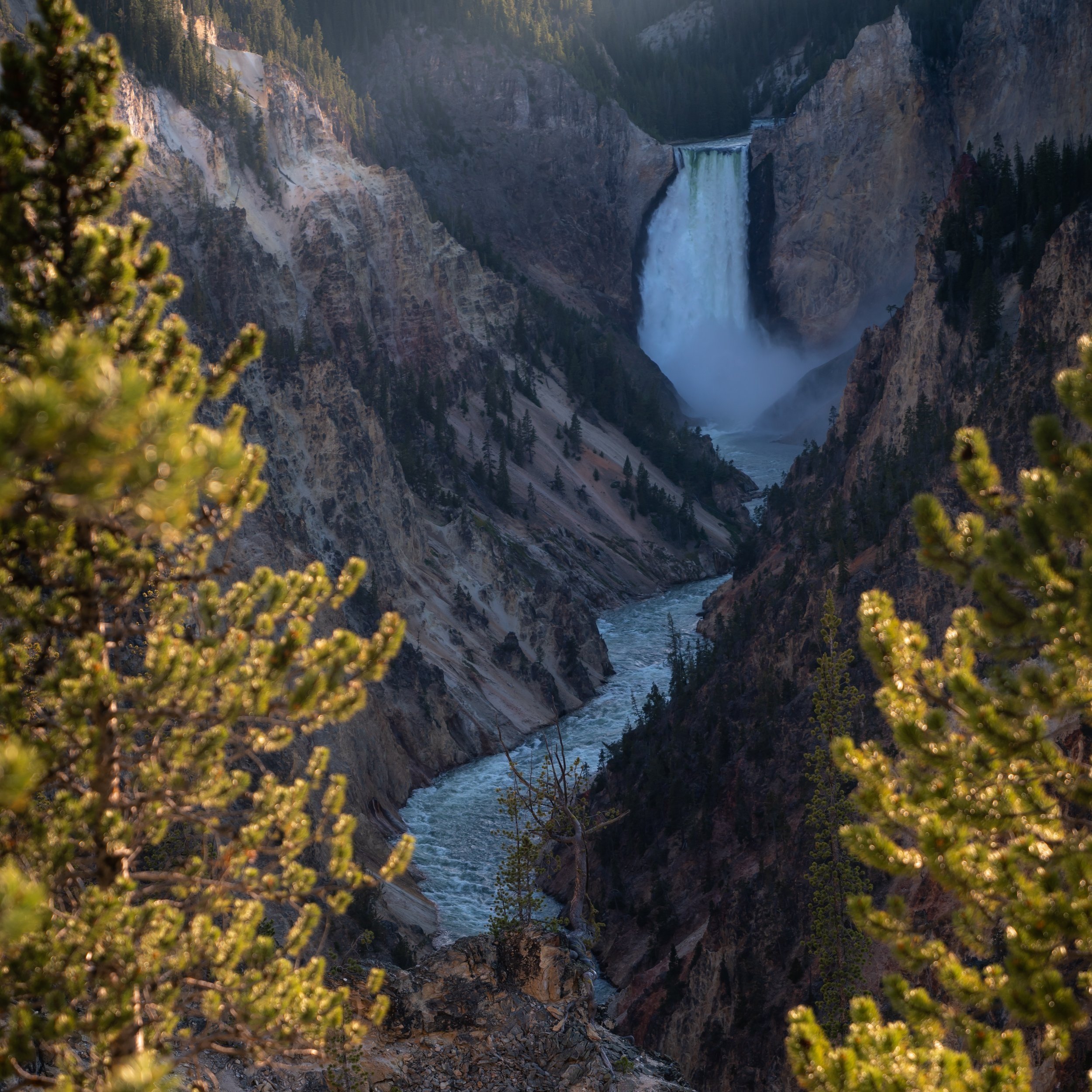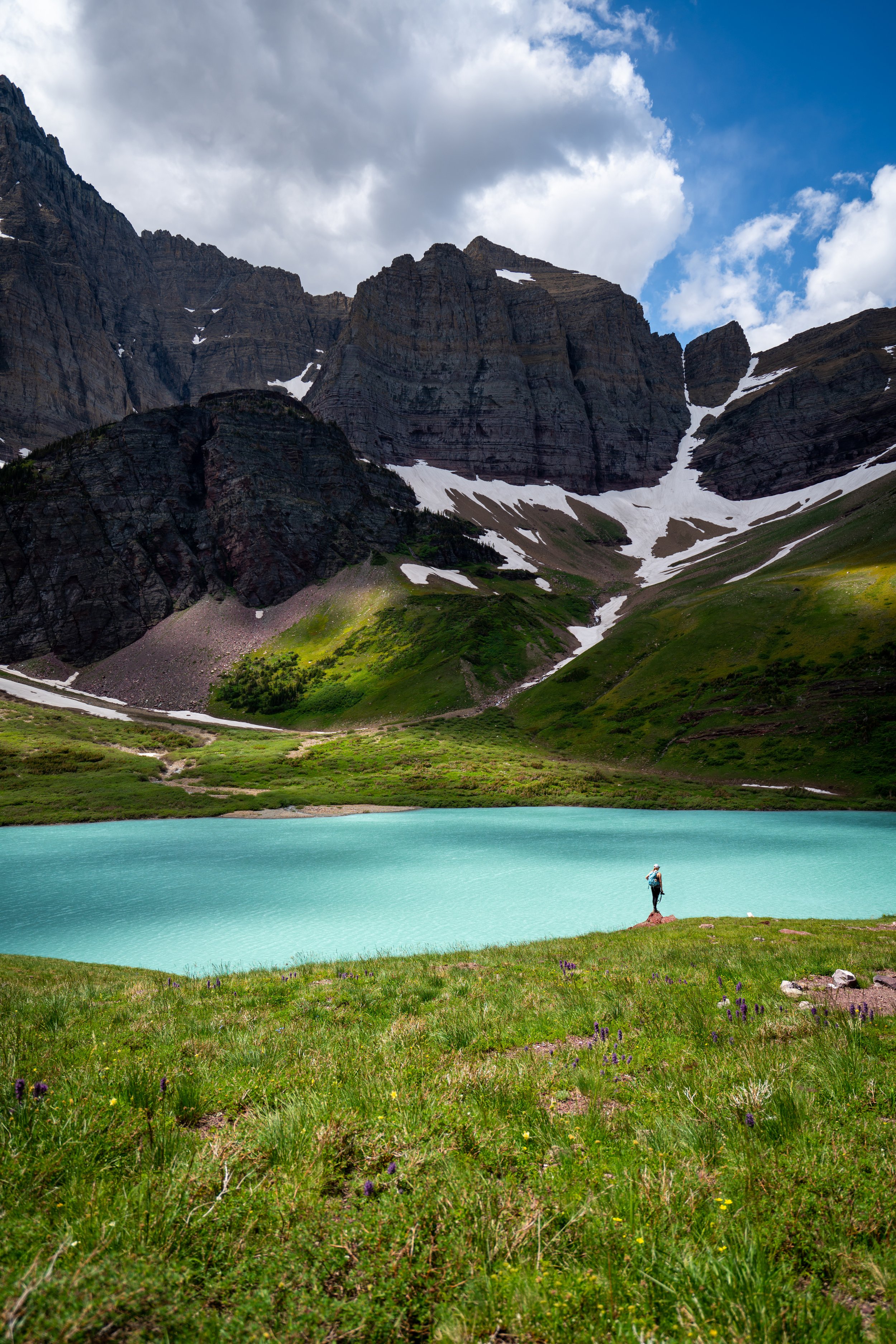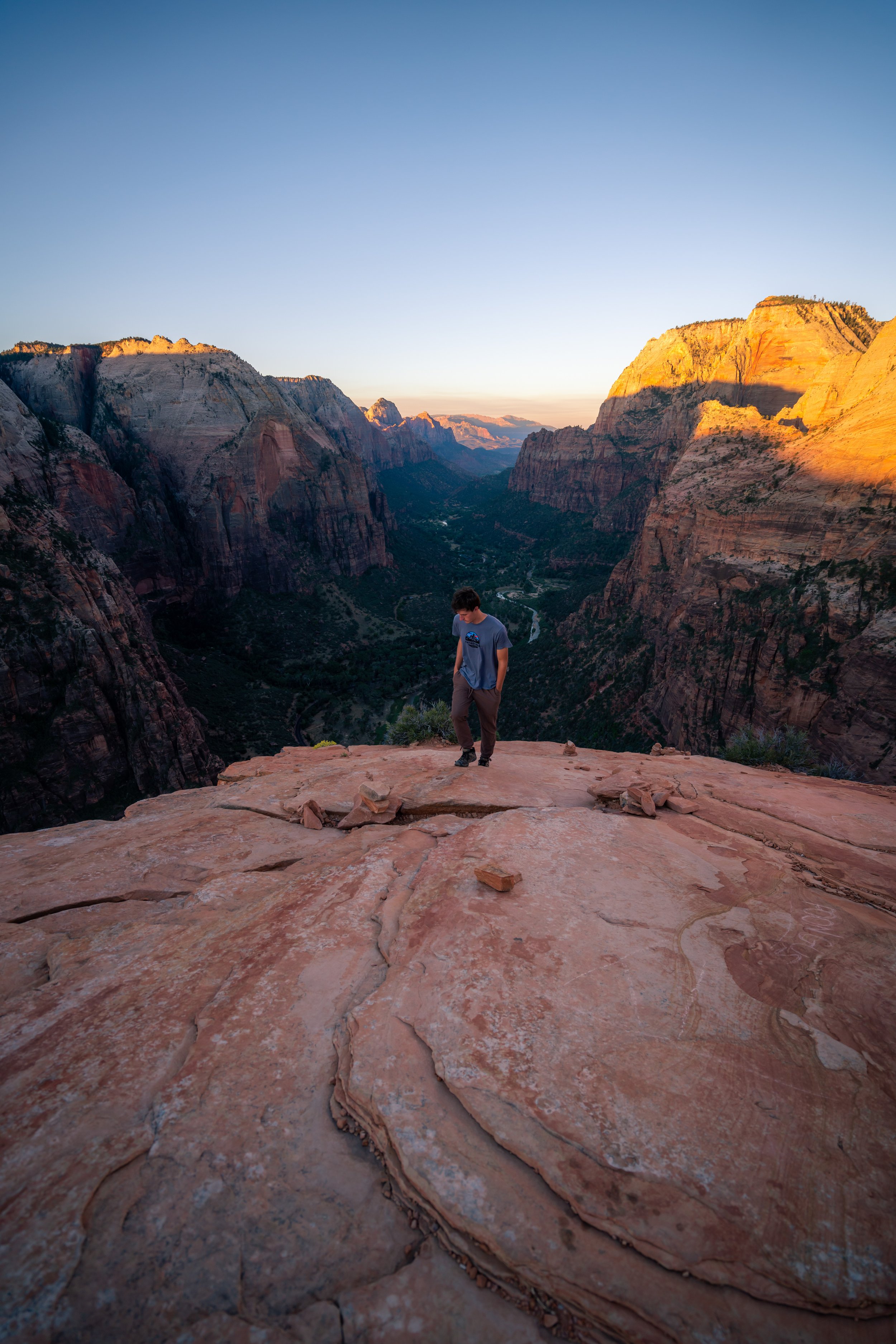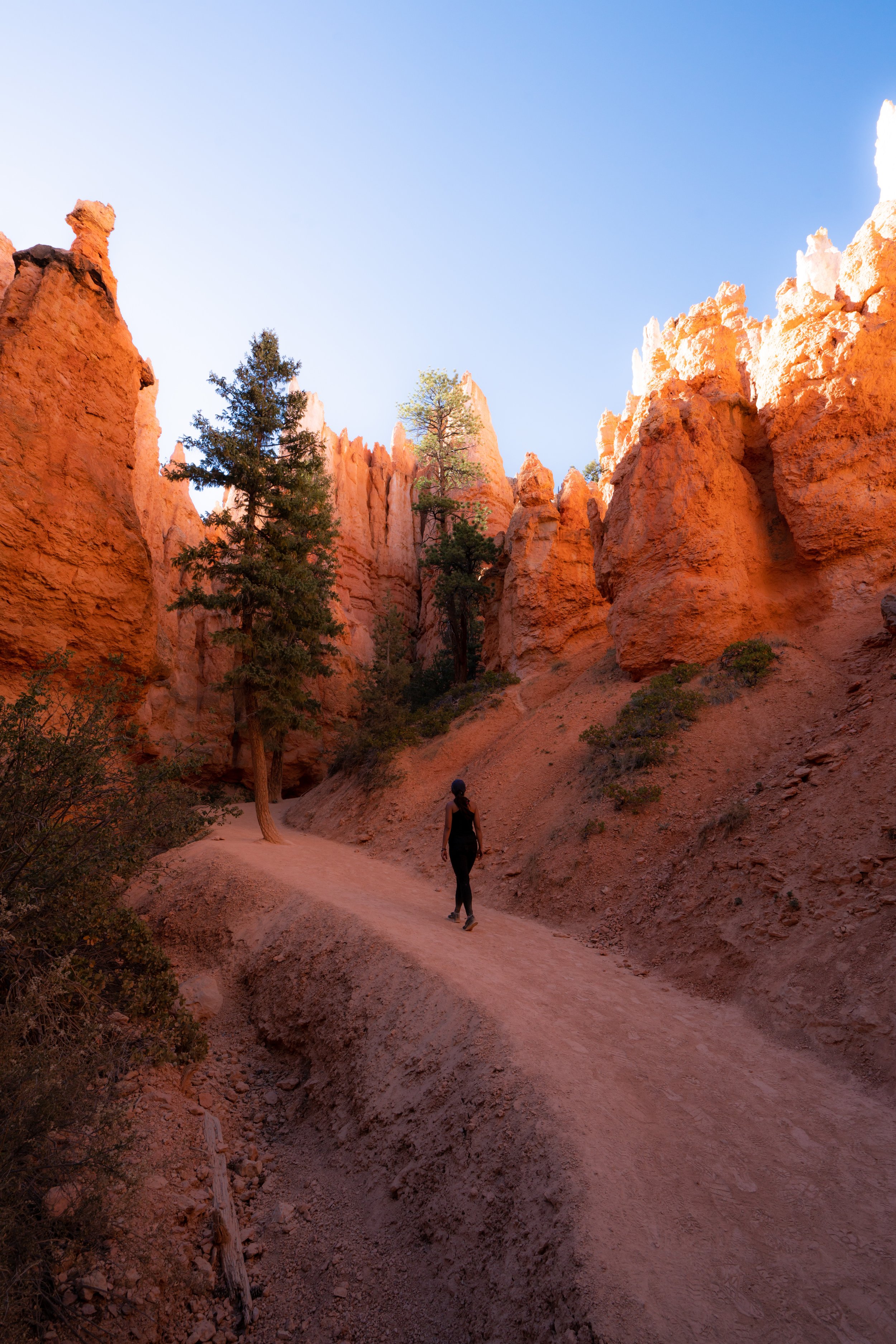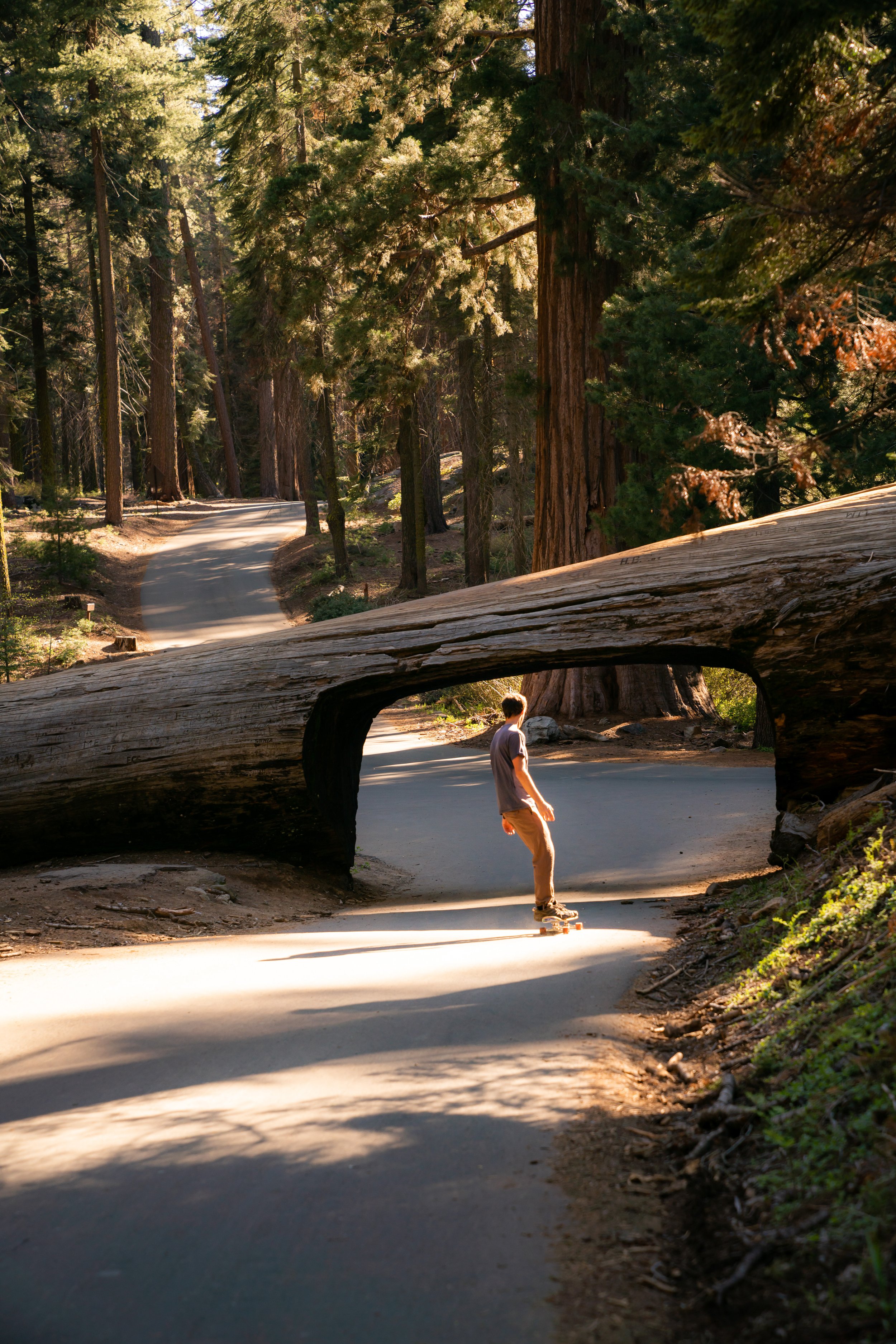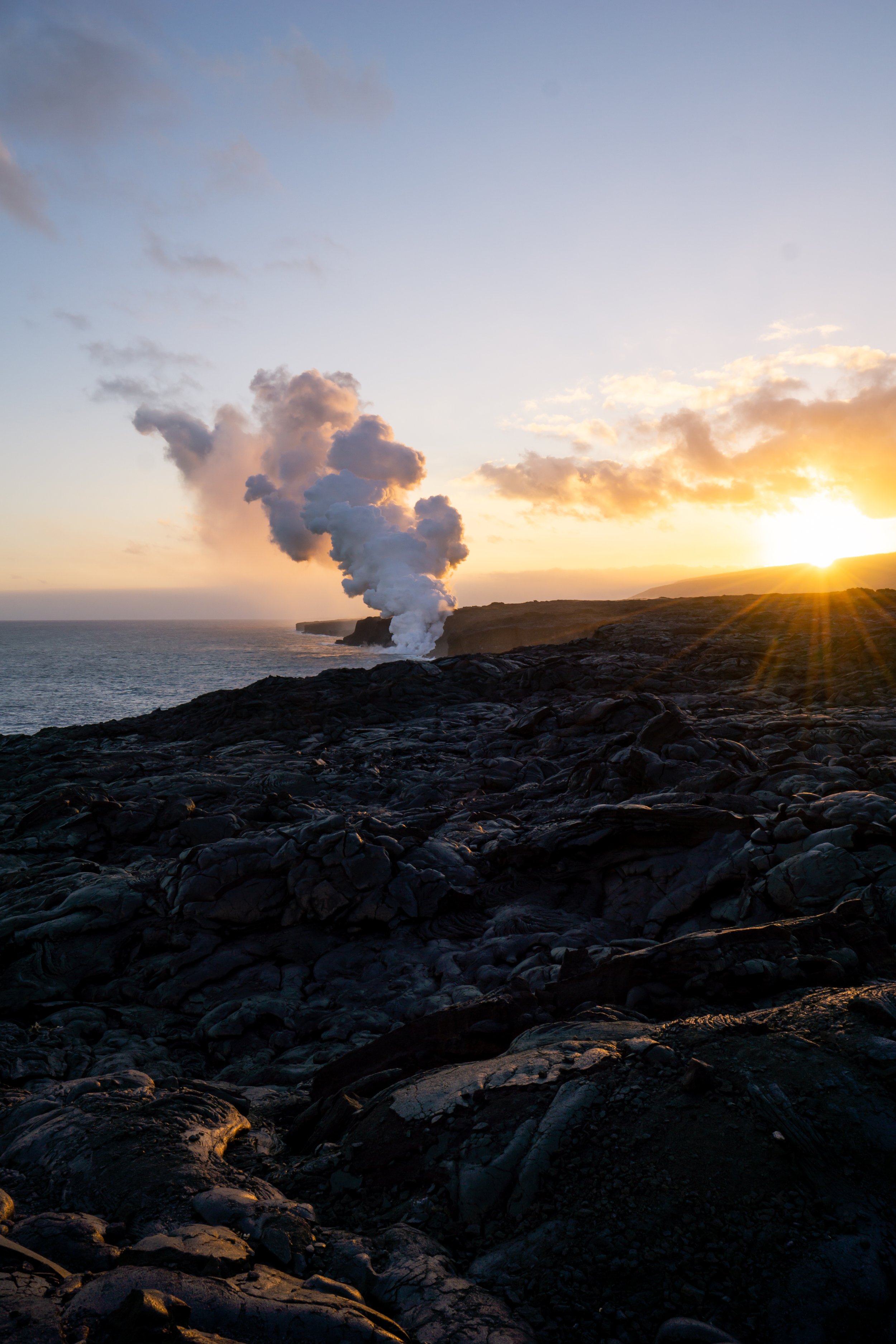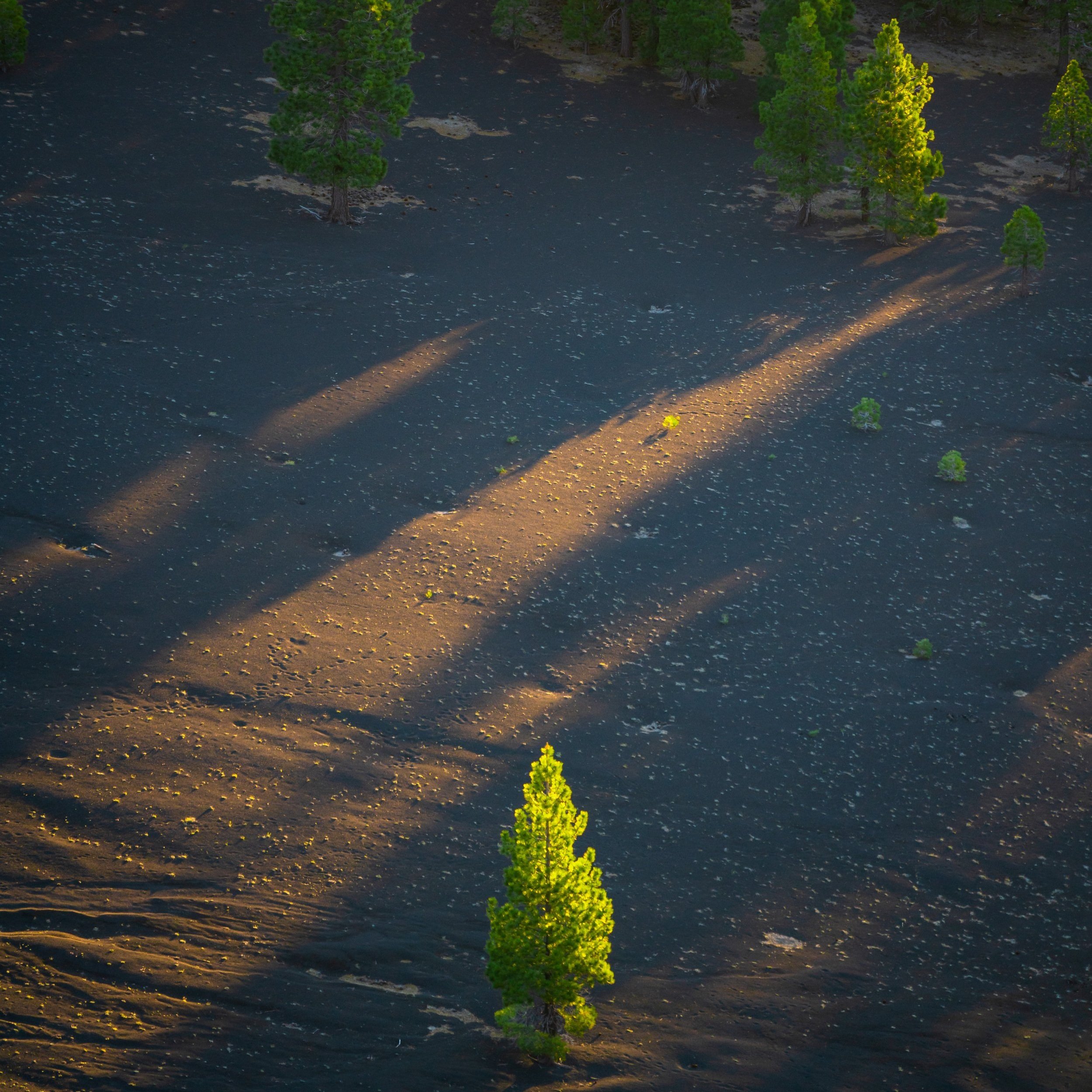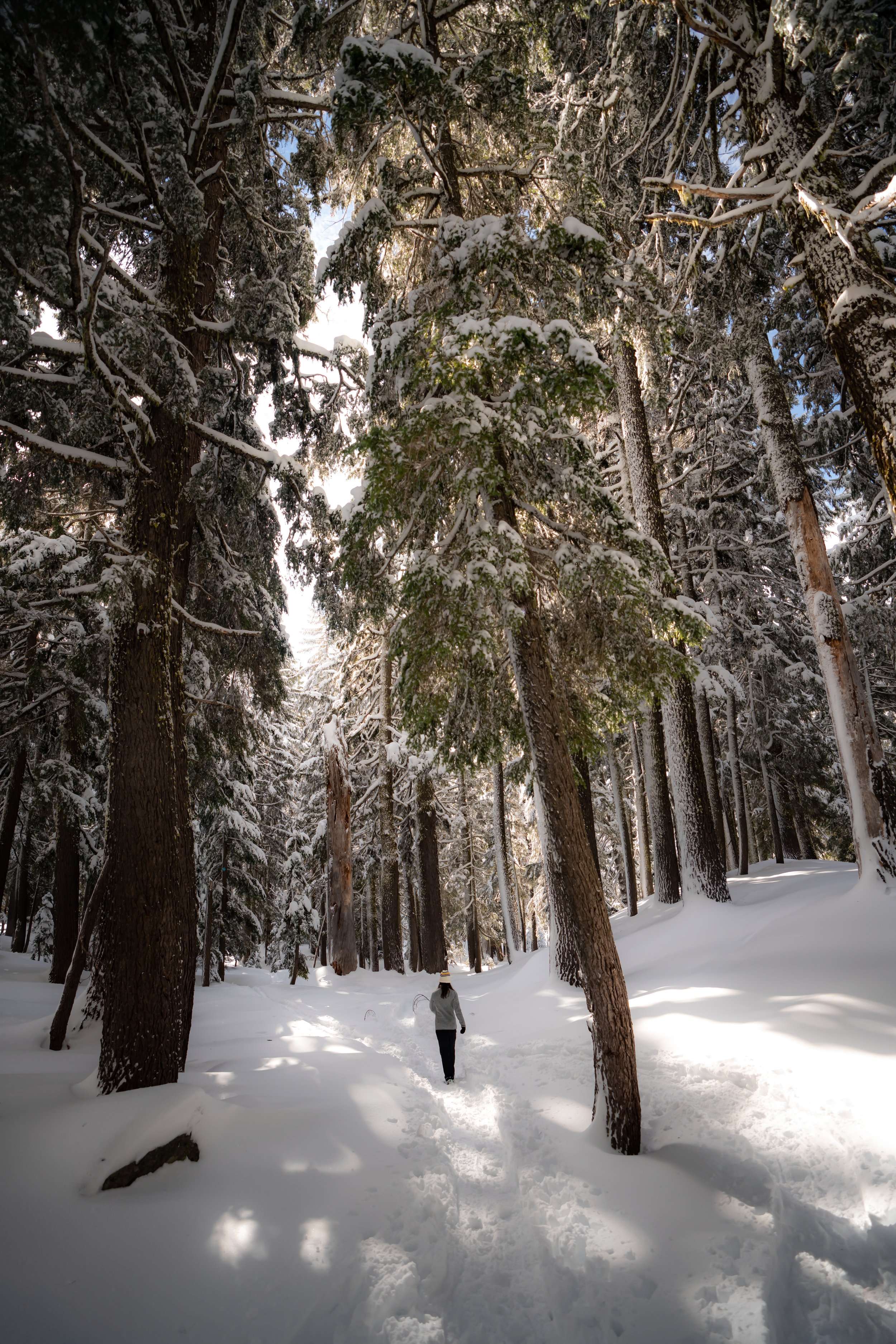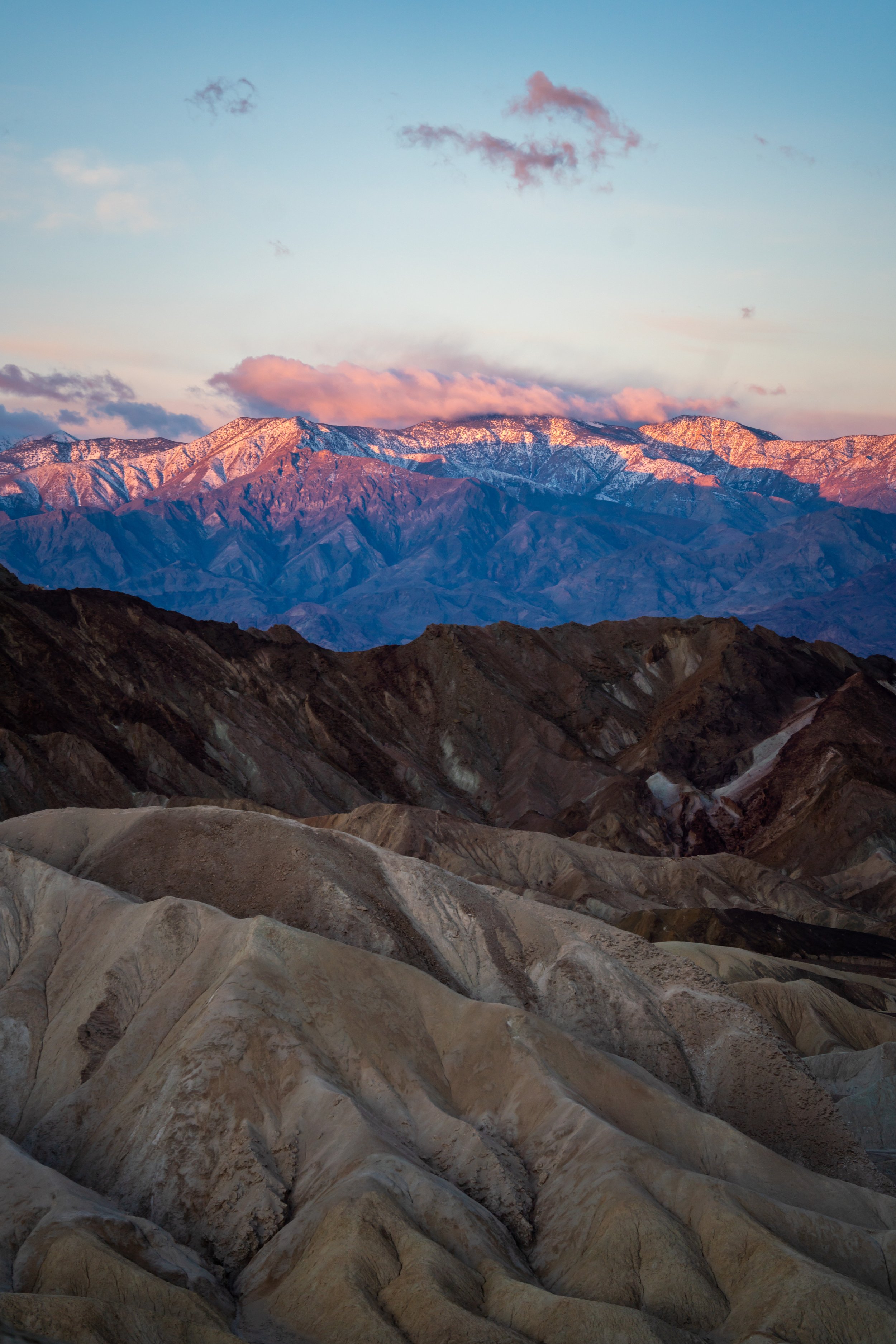10 Best Things to Do in White Sands National Park
Nestled between the San Andres Mountains to the west and the rugged Sacramento Mountains to the east, the snow-white gypsum sand of White Sands National Park is a landscape unlike any other!
The expansive sea of white sand in the heart of the Chihuahuan Desert attracts visitors from around the world looking to explore this otherworldly playground that is the largest gypsum dune field on earth!
All being said, White Sands National Park is a world-class destination for all kinds of visitors, including hikers, photographers, families with young kids, and those simply looking to run around in the endless sea of rolling white dunes!
What is the Best Time of Year to Visit White Sands National Park?
It’s no secret that White Sands National Park in south central New Mexico can be dangerously hot during the summer months of June, July, and August, but to dive a little deeper, there are a few months during the travel off-season that make for the best time of year to visit White Sands, depending on what you’re looking to do.
Some of these considerations include the temperature in the park, the temperature of the sand dunes, the wildflower season, and the ability to watch the sunrise in the park, which is not as straightforward as you might think.
By all this, I mean that October-March is generally the safest and most comfortable time of the year to visit White Sands National Park, based on temperature alone. However, there is a sweet spot in both March and October, where visiting can be the best time of year because they are some of the more comfortable times of the year to hike in the dunes without shoes!
Furthermore, mid-April through May is the best time to see wildflowers in the park. As far as watching the sunrise goes, there’s variability throughout the year, but again, the middle summer months of June, July, and August are not the best because the park gate doesn’t open until 7 a.m. and sunrise is well before.
With that in mind, watching the sunrise in the dune field is fairly variable throughout the year, which has a lot to do with daylight saving time. To learn more, I highly encourage you to read the section below about catching the sunrise in the park.
Hiking Checklist - White Sands
Obviously, for camping, you will need general backpacking gear. For this reason, I wrote a separate post about what backpacking gear is worth the money, from my experience, and what the best alternatives are to save you money.
Read My Separate Post: Best Ultralight Backpacking Gear
In addition, here is a complete list of must-have things that you will want for any hike in White Sands National Park.
Osprey 3L Water Bladder - The Osprey 3L water bladder is the most universal hiking and backpacking water bladder on the market, and it’s my go-to because of the slide-off seal that allows it to be quickly filled from the top. Additionally, individual parts are easily replaceable, such as the bite valve.
Blister / Heel Protectors - I swear by these cheap, amazing heel protectors to prevent blisters for nearly every kind of hiking and backpacking that I do!
Black Diamond Headlamp - Personally, I recommend the Black Diamond Storm because it is one of the brightest, lightest, and longest-lasting headlamps on the market—and trust me, the weight-to-battery-life ratio really does matter!
Hiking / Trail Running Shoes - Depending on the type of trail, I prefer to use either the Keen Targhee for longer, more rugged hiking or the HOKA Zinal Trail-Running Shoe for lighter, less intense trails. In either case, both have been amazing to me for many years across countless environments, and both can be found in men’s and women’s sizes. - (Men’s Keen / Women’s Keen) (Men’s HOKA / Women’s HOKA)
Waterproof Rain Shell - You never know when it may rain, and I’ve learned over the years that a rain shell is far better than a rain jacket. By this, I mean that it’s best to have something that the water will roll right off of, which is why I recommend the Patagonia Torrentshell 3L available in both men’s and women’s sizes.
Sun Shirt w/ Hood - A quality sun shirt can be your best friend on a trail with minimal shade, which can be found in both men’s and women’s sizes.
High SPF Sunscreen - Packing high-SPF sunscreen is a must for long days outside!
10 Best Things to Do in White Sands National Park
The following list is written in no particular order of best or worst, but more importantly, I talk about a number of obvious and not-so-obvious tips to know at the end.
Don’t skip over the end, as many are things that I wish I would have known before my first visit to White Sands National Park!
On a different note, you can save time when you arrive by purchasing your National Park pass, along with your other outdoor gear, at REI before traveling to the park!
1. Dune Life Nature Trail
Distance: 1.0 miles / 1.6 km
The Dune Life Nature Trail is the go-to day hike in White Sands National Park to see the best of the dune field without venturing too far from where the hike began.
In short, trails across White Sands National Park can be very remote, vaguely marked, and have no shady places to get out of the sun.
Therefore, trails like the Dune Life Nature Trail make for a great choice if you may be visiting the park at one of the hotter times of the year, are hiking with young kids, or you simply aren’t interested in setting off on some of the park’s more remote trails.
Read My Separate Post: Dune Life Nature Trail
2. Watch Sunset in the Park
Golden hour in White Sands National Park is, without a doubt, the best and most beautiful time to enjoy the stunning gypsum sand!
I say this because as the light gets softer and softer in the evening, the best of the beautiful pink, orange, and yellow hues light up the white sand unlike any other time of day, which is most beautiful the further and further you go down Dunes Drive.
That being said, watching the sunset in White Sands National Park is an entirely different experience than watching the sunrise. This is exactly why I separated the two.
Therefore, I highly encourage you to read further if you are interested in seeing both during your visit.
Time and Date: Sunrise & Sunset Times
3. Alkali Flat Trail
Distance: 4.6 miles / 7.4 km
The Alkali Flat Trail is the longest and most remote trail in White Sands National Park.
The 4.6-mile (7.4 km) roundtrip loop begins at the furthest trailhead off Dunes Drive and ventures straight into the heart of the dune field through some of the most beautiful, untouched, and pristine sand dunes in the park, leading to the point where the gypsum sand dunes suddenly end and the Alkali Flats begin.
Nevertheless, this all goes without saying that the Alkali Flat Trail is also the most challenging trail in the park, and I encourage you to learn more about this longer adventure in my separate post.
Read My Separate Post: Alkali Flat Trail
4. Sledding on the Sand Dunes
Whether you hike for miles into the dune field or drive up to the Backcountry Loop Trailhead, sledding on the gypsum sand in White Sands National Park is about as old school as a pastime gets!
That being said, waxed plastic snow saucers work the best, and sleds can be bought in advance to save a little money or purchased upon arrival at the park’s gift shop.
Google Maps Directions: Backcountry Camping Loop Trailhead
5. Interdune Boardwalk Trail
Distance (Roundtrip): 0.4 miles / 0.6 km
The Interdune Boardwalk is the easiest and most accessible trail in White Sands National Park.
With that in mind, the boardwalk is inevitably one of the more popular day hikes in the park, but even so, I highly recommend stopping for the quick hike because the trail is, without a doubt, the best place in White Sands National Park to learn about the park’s history, its formation, and all about the park as we see it today!
Read My Separate Post: Interdune Boardwalk Trail
6. Sunset Stroll
The Sunset Stroll is an easy, ranger-led sunset hike, where visitors have an opportunity to hike and learn firsthand about White Sands National Park from one of the local staff that knows the park best!
To participate, simply arrive at the meeting point no earlier than 30 minutes prior to the posted time. This time can either be found at the meeting spot, as shown below, or by asking the staff in the visitor center.
This is all to say that reservations are not required, and the Sunset Stroll is timed to end at sunset, so that those that participating can enjoy the beautiful sunset over the San Andres Mountains to the west!
Google Maps Directions: Sunset Stroll Meeting Area
7. Watch Sunrise in the Park
The reason why I’ve separated sunrise from sunset is because watching the sunrise in White Sands National Park is an entirely different experience, based entirely around the park’s operating hours from 7 a.m. to sunset year-round.
This means that sunrise can only be seen during the off-season months because each year around the third to fourth week in March, sunrise is too early to see it from within the park unless you are camping along the Backcountry Camping Loop.
Additionally, it’s typical during the times of year when sunrise is after 7 a.m. that cars will sit outside the gate waiting for it to open. With that in mind, you’ll need at least 10-15 minutes to have time to drive in, park, and hike into the dunes to actually see it.
This is all to say that the trailheads deeper into the dune field, like the Backcountry Camping Loop or Alkali Flat Trail, are the best places to enjoy the sunrise!
Time and Date: Sunrise & Sunset Times
8. Backcountry Camping Loop Trail
Distance: 2.0 miles / 3.2 km
The Backcountry Camping Loop Trail is the go-to adventure for visitors interested in spending the night in the park beneath the desert night sky!
That being said, the Backcountry Camping Loop is the only trail in White Sands National Park where overnight camping is allowed, but this all goes without saying that the hike is also a favorite among both day hikers and those looking to go sledding!
I say this because the Backcountry Trail is often seen as the intermediate hike between both the longer and much more involved Alkali Flat Trail and the shorter Dune Life Nature Trail, making the Backcountry Camping Loop the perfect in-between adventure!
Read My Separate Post: Backcountry Camping Loop Trail
9. White Sands Historic District
Long before White Sands became the National Park as we know it today, the park was designated under the Herbert Hoover administration as a National Monument in 1933.
Shortly thereafter, in 1936-1940, numerous buildings were constructed, including the visitor center and White Sands Trading Company gift shop. These buildings were revered for their “Pueblo-Revival” style, blending aspects of traditional Pueblo and Spanish Colonial architecture.
Today, park visitors are encouraged to stop in to see and learn more about the historic district, get questions answered about White Sands National Park, and to fill up on water, as the visitor center is the only place in White Sands National Park to find water in the entire park.
Google Maps Directions: White Sands Historic District
10. Playa Trail
Distance: 0.5 miles / 0.8 km
Playas can be found in random areas scattered all throughout White Sands National Park, but none are as easy to get to as the one right off the Playa Trail.
That being said, the Playa Trail is not what most visitors that come to White Sands expect to see, but I still feel that the short adventure is worth the trip because the easy 0.5-mile (0.8 km) trail allows for the opportunity to learn about this unique ecosystem that you’d otherwise never notice!
Read My Separate Post: Playa Trail
10 Things to Know Before Visiting White Sands National Park
1. You don’t have to hike far to enjoy the best of White Sands National Park.
Contrary to what you may think before visiting, many of the best spots and most beautiful photos in White Sands were all taken within just a few minutes of walking into the dune field.
While hiking longer trails, like the Alkali Flat Trail, is stunning and makes for some extremely beautiful views, the best of the park can be seen by simply venturing into the white sand on either side of Dunes Drive, which is especially important to known if you’re planning your visit during the hotter summer months!
2. The further you go down Dunes Drive, the better the sand dunes become.
As you drive into the park off Highway 70, the dunes may seem small and far away.
However, the further you drive down the 7.5-mile (12.1 km) Dunes Drive, the closer and bigger the sand dunes become.
It is past the area where the pavement ends at about mile-marker 5.0 (8.0 km) that the best of the dunes for hiking, sledding, and photography can be enjoyed!
3. Wear sunglasses and a hooded sun shirt.
Unless you’ve experienced a bad sunburn from the reflection off a glacier, you’re likely unaware of how strong the sun can and will be on a bright white surface, like the gypsum sand of White Sands National Park.
I say this to say that if you plan on spending a few hours hiking around the dunes, sunscreen is simply not enough protection!
Therefore, I cannot recommend a quality hooded sun shirt any more, and good sunglasses to protect your eyes from the harsh reflection.
4. Be careful at the bottom of the dunes.
On the surface, this one might sound a little strange, but what I mean is that it’s easy to pick up a lot of speed by running or sledding down a dune. However, what’s not so apparent is that the bottom of the dunes can be as hard as concrete, which can easily break an arm, a leg, or knock out teeth!
It’s the feeling of being so free and weightless as you run down a dune, expecting each step to have a little give until all of the sudden it doesn’t, and you’re met with an abruptly rock-hard surface at the bottom that can have all sorts of unintended consequences for the unsuspecting.
5. The visitor center is the only place to get water in White Sands National Park.
This one is fairly self-explanatory, but be sure to stop and fill up before driving further, because you will not find running water anywhere other than the visitor center.
Google Maps Directions: White Sands National Park Visitor Center
6. Longer trails have more variability regarding where hikers go.
By this, I mean that it’s easy to follow the trail on a shorter hike, like the Dune Life Nature Trail, but as the distance increases, so do the paths that hikers take.
This can be especially challenging on the Alkali Flat Trail, as trail markers often get buried by the dunes or blown over by the wind, making hikers veer in all sorts of directions that can either lead to you and your group getting lost, following footprints that lead nowhere, or creating false trails that subsequent groups may follow by mistake.
Therefore, it’s always important to choose the right trail for the conditions and time of year, follow the trail markers as best as possible, and hike with an ample amount of water and a headlamp in case of an emergency.
Many hikers have lost their lives in the dune field before, which is why I want to emphasize these things to remain safe!
7. Choose your camera lens before entering the dunes.
This one obviously applies to photographers only, but sand dunes, here and elsewhere, are the last place that you want to be switching lenses, as the blowing sand can easily cause permanent damage to your camera.
Therefore, think ahead about what type of shot you are looking to capture before hiking in!
8. Thunderstorms are exceptionally dangerous in White Sands National Park!
It’s widely known that being outside during a thunderstorm is very dangerous, but in sand dunes here and elsewhere, you will almost always be the tallest object around, making them particularly dangerous here over other environments.
Therefore, it’s important to know the forecast before setting off on any adventure and to know that during the spring, summer, and fall months, thunderstorms can and do show up without warning.
I have personally been caught off guard during a thunderstorm in a dune field, and to date, it is still the worst thunderstorm incident I’ve experienced. Take this risk seriously!
9. White Sands National Park closes in the evening.
Unlike many National Parks around the country that remain open 24/7, White Sands National Park opens each day at 7 a.m. and closes each day after sunset.
That being said, watching the sunset is by far more accessible, but watching sunrise can only be done during certain times of the year, which I encourage you to learn more about in the section above.
National Park Service: White Sands National Park Hours
10. The pavement on Dunes Drive ends about 5.0 miles (8.0 km) from the visitor center.
Dunes Drive is the only road in and out of White Sands National Park, but as the road gets deeper into the dune field, the pavement ends, as this section of roadway requires constant maintenance to keep it clear of sand.
That being said, the unpaved section of Dunes Drive is accessible to 2WD vehicles, but it typically becomes a little more bumpy from this point to the end.
Best Way to Find Places to Stay!
Wherever I travel, I love to start my search for places to stay on VRBO.
Even if I don’t end up booking through them, I think it’s one of the best ways to see what’s in the area!
Best Way to Book Rental Cars!
I travel quite a bit, and I know firsthand that finding a good rental car deal can be a challenge, but that’s why I recommend comparing all of your options with Discover Cars.
In short, Discover Cars is a well-known, reputable business that allows you to search for the best deal across companies, and they have the best full-refund cancellation policy I’ve ever seen, valid up to 72, or sometimes even 48, hours prior to your reservation!
Book Here: Discover Cars
Safety
When it comes to staying safe in White Sands National Park, the safety concerns are generally centered around a few main things.
First and most obvious, the summer heat/ dehydration are nothing to take lightly in southern New Mexico. Like Death Valley, White Sands National Park is often seen as an off-season park compared to others, like Yellowstone or Grand Teton, where the best time to visit is during the summer.
That being said, White Sands National Park is a place of extremes, with summer temperatures that can soar well above 100ºF (38ºC) and winter temperatures that drop as low as 10ºF (-12ºC).
However, what this doesn’t mention is how much greater and faster the risk of sunburn can be in this extreme environment. What I mean is that the white gypsum sand can act like a glacier, where the risk of serious sunburn is intensified because of the solar reflection off the white surface.
Therefore, arriving prepared with plenty of sunscreen, water, and good sunglasses is not only recommended but essential for a safe visit. Additionally, be aware that the visitor center is the only place in White Sands National Park to get water!
The next thing that poses the greatest risk in White Sands is simply getting lost. The vast majority of trails within the park are in the dune field, and being the case, they are only marked by spaced-out trail markers that stick out of the sand. However, these markers can and do fall over and get buried by the sand, meaning that trails can be difficult to follow—especially when it’s windy and visibility is limited.
Finally, there are a few rare but venomous reptiles to be aware of, including the Prairie and Western Diamondback Rattlesnake, and the mildly venomous Sand Scorpion, which is said to feel similar to a bee sting.
As always, find the most up-to-date information and conditions on the official National Park website.
National Park Service: White Sands National Park
U.S. National Parks Pass
Did you know that the same America the Beautiful Pass that grants access to all 63 U.S. National Parks can be purchased in advance at REI?
Yes, you can save time when you arrive by purchasing your National Park pass, along with your other outdoor gear, at REI before traveling to the park!
More U.S. National Parks
If you’d like to read more about some of my best recommendations when visiting other U.S. National Parks, check out some of my other posts below!
Disclaimer
All information provided on this blog is for informational purposes only and is not intended to be a substitute for information or advice from qualified professionals or managing agencies.
Noah Lang Photography LLC makes no representations or warranties regarding the accuracy or completeness of the information provided here, and readers should use their own discretion, judgement, and seek professional advice where it is appropriate.
Furthermore, Noah Lang Photography LLC shall not be held responsible for any injuries, lost individuals, or legal issues arising from the use of information provided on this website, and if applicable, the above safety disclaimer should be referenced to provide a generic overview of the risks involved.
All said, the content on this blog is for the sole use of Noah Lang Photography LLC, and unauthorized use or reproduction of this content is strictly prohibited.
Disclosure
This post is not sponsored.
However, some of the links in this post are affiliate links, which means that I may earn a small commission if a purchase is made through one of those links. This commission comes at no additional cost to you, and I only recommend products that I personally use and believe will add value to my readers. Thank you for your support, which enables me to continue creating more!
To read the full privacy policy, click here.

About This Blog
Noah Lang Photography, also known as @noahawaii, is 100% reader-supported!
I do not accept guest articles or sponsored content of any kind on my blog, which is why, if you enjoy the outdoor and travel content I create, please consider buying me a coffee!
I appreciate your support, which helps me continue to keep this blog alive!




















